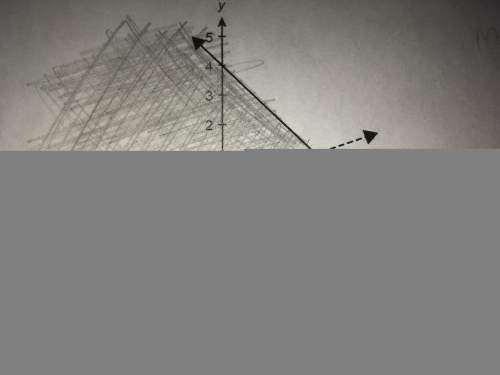This is done in for parts (separated by letter)
f=H-66.4/2.26
H represents...

Mathematics, 13.03.2020 09:13 marchellepenuliar
This is done in for parts (separated by letter)
f=H-66.4/2.26
H represents a person's height and f is the length of the person's femur bone. The equation has a margin of error of 3.42 cm.
A. Calculate the height if some of the remains. You have found several femur bones. In order to determine the heights we need to first solve the given formula H.
B. The femur bones measure 40.6 cm, 39 cm, and 48.2 cm. find the height of each person.
c. find the height of eacg person in feet.
d. using the margin of error, create an absolute value inequality to represent the range of the height for each individual.
I need help understanding both the formula for H and margin of error, please

Answers: 3


Another question on Mathematics

Mathematics, 21.06.2019 23:00
Solve the system of equations using the linear combination method. {4x−3y=127x−3y=3 enter your answers in the boxes.
Answers: 1

Mathematics, 22.06.2019 00:30
Which number can each term of the equation be multiplied by to eliminate the decimals before solving? 5.6j- 0.12=4+1.1j
Answers: 3

Mathematics, 22.06.2019 03:40
Anull hypothesis states that the difference between 8 hours of sleep and 3 hours of sleep has no effect on the number of pictures a student will remember during a picture memory interface test (pmit). examining the mit database, an extremely small t-value of 0.1611 is found. this t-value is much smaller than the smallest t-value on the chart for p-value reference. from this information we can: select one: a. accept the null hypothesis because the p-value obtained shows that the difference between the two groups being tested is not statistically significant b. accept the null hypothesis because the p-value obtained was statistically significant c. reject the null hypothesis because of the p-value obtained d. reject the null hypothesis because the data obtained is statistically significant
Answers: 3

Mathematics, 22.06.2019 04:30
Atoss of a 20-sided die is equally likely to be any integer between 1 and 20 inclusive. what is the variance? provide your answer to two decimal points.
Answers: 1
You know the right answer?
Questions

Computers and Technology, 17.04.2020 04:35


Social Studies, 17.04.2020 04:35

Mathematics, 17.04.2020 04:35









Computers and Technology, 17.04.2020 04:35


Mathematics, 17.04.2020 04:35

Mathematics, 17.04.2020 04:35




Mathematics, 17.04.2020 04:35




